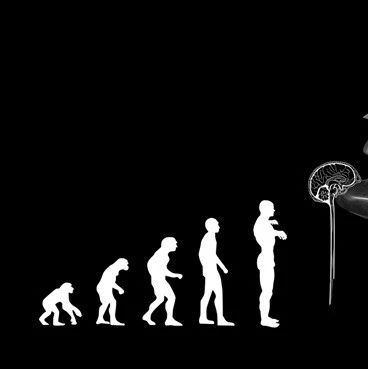导读:研究显示,在一年里,雄性大熊猫的繁殖有效期是六个月或更长,然而雌性大熊猫的发情期只有1~3天。雄性大熊猫为了能遇到恰在发情期的雌性大熊猫并且成功繁殖下一代,必须要行走很远的路程并且遇到很多困难的地带。

使野生或饲养的大熊猫交配的困难是出了名的,现在一项新研究发现了到底这件事是有多么的棘手。研究显示,在一年里,雄性大熊猫的繁殖有效期是六个月或更长,然而雌性大熊猫的发情期只有一至三天。
近期发表在《繁殖生物学》(Biology of Reproduction)上的一篇论文,这么长时间以来,第一次发现雄性大熊猫的生殖能力的一些细节。
另外,由于雌性大熊猫的交配期很短,雄性大熊猫恰好能在那几天与雌性大熊猫相遇更是需要长途跋说涉的。第一作者库珀•艾特肯-帕尔默:“雄性大熊猫为了能遇到恰在发情期的雌性大熊猫并且成功繁殖下一代,必须要行走很远的路程并且遇到很多困难的地带。”
艾特肯-帕尔默,是史密森保护生物学研究所(SCBI)的兽医。她说在北半球雌性的繁殖季节是每年的二月末至五月。
先前有研究:个别的雌性熊猫在繁殖季节那个时间段里有一至三天的发情期。但是直到现在,关于雄性大熊猫身体内的研究还很少。
雄性大熊猫的情绪波动
三年来,艾特肯-帕尔默和她的团队在中国成都大熊猫繁育基地对八只雄性大熊猫进行了研究。她们测量了雄性大熊猫睾酮水平,精子的浓度,睾丸大小,和生殖行为的季节性变化。
研究人员发现,雄性大熊猫的生殖合适期与雌性大熊猫不匹配,在雌性大熊猫进入发情期的前三个月至五个月雄性大熊猫的精子就已经产生了。
艾特肯-帕尔默说:“在那个阶段,雄性大熊猫的睾丸开始变得特别的大并且它们的行为会发生改变。”
“我们看到的是它们的变化都是和寻找雌性大熊猫相关的,比如叫声提高或者进行气味标记。”
除了我们看到的雄性大熊猫不寻常的情绪之外,它们还对雌性大熊猫特别的尊敬。
合作作者,史密森国家动物园的生殖生理学家丽贝卡•斯平德勒说:“雄性一般都是雌性接受很好的晴雨表,它们并不会在雌性大熊猫不愿意接受的时期与其交配。”
研究人员认为,虽然生殖可行时期在大熊猫的两性之间相差很大,但这个过程是否可以有效的发生,就在于确保雄性大熊猫能否在短暂和不可预知的雌性大熊猫发情期时有足够的精子。
影响雄性大熊猫生殖行为的荷尔蒙的变化发生在几个月里,艾特肯-帕尔默说:“在繁殖季节,雄性都已经降低这些激素、发春行为和精子的生成,进而在6月左右它们的生殖潜力戛然而止。“
她说:“这些变化要求雄性大熊猫最好能够在这段时期找到尽可能多的雌性进行交配,并且尽量减少能量的消耗。”
濒危的野生大熊猫
一个雌性大熊猫每两年约生产一至两只幼崽,因此,增大野生种群是一个艰难而缓慢的过程。目前,留在中国中部的山区森林的大熊猫数目已经少于1600只。
另一项新的研究,由另外的团队,史密森保护生物学研究所的科学家发表。他们发现到2080年的时候,近一万平方公里的大熊猫栖息地将有可能消失,由于气候变化导致大熊猫栖息地的生态转移到高海拔和纬度。这意味着在70年之内,他们的栖息地将显著减少。
SBCI野生动物生态学家梅利莎桑格是这篇在国际生态学杂志发表的论文的第一作者。
桑格和她的团队呼吁根据气候的预测应建立更多的“走廊”,去减少大熊猫生活区域的碎片化,去发展成更多的保护区。
正如史密森国家动物园的大熊猫美香和添添所希望的,圈养繁殖项目也在进行之中了。这两只大熊猫是在前年年初培育的,但今年到目前为止,美香还没有进入发情期。

Protracted Reproductive Seasonality in the Male Giant Panda (Ailuropoda melanoleuca) Reflected by Patterns in Androgen Profiles, Ejaculate Characteristics, and Selected Behaviors
Copper Aitken-Palmer, Rong Hou, Caitlin Burrell, Zhihe Zhang, Chengdong Wang, Rebecca Spindler, David E. Wildt, Mary Ann Ottinger and JoGayle Howard
The female giant panda experiences a brief (24-72 h) seasonal estrus, occurring once annually in spring (Feb-May). Our aim was to determine the existence and temporal profile of reproductive seasonality in the male of this species. The study was facilitated by 3 years of access to eight giant panda males living in a large breeding center in China. Seasonal periods for the male were defined on the basis of female reproductive activity as pre-breeding, breeding (early, peak, late), and non-breeding seasons. Testes size, fecal androgen excretion, ejaculated sperm density, and frequency of reproductive behaviors (i.e., locomotion, scent-marking, vocalizations) increased (P < 0.05) from the pre-breeding period (Oct 1-Jan 31) to the early breeding season (Feb 1–Mar 21). Testes volume and sperm concentration were maximal from Mar 22 through Apr 15, a period coinciding with maximal female breeding activity. The occurrence of male reproductive behaviors and fecal androgen concentrations began declining during peak breeding and continued from Apr 16 through May 31 (late breeding period), returning to nadir throughout the non-breeding interval (Jun 1-Sep 30). Reproductive quiescence throughout the latter period was associated with basal testes size/volume and aspermic ejaculates. Our results reveal that testes morphometry, fecal androgen excretion, seminal quality, and certain behaviors integrated together clearly demonstrate reproductive seasonality in the male giant panda. The coordinated increases in testes size, androgen production, sperm density, and sexual behaviors occur over a protracted interval, likely to prepare for, and then accommodate a brief, unpredictable female estrus.
文献链接:








